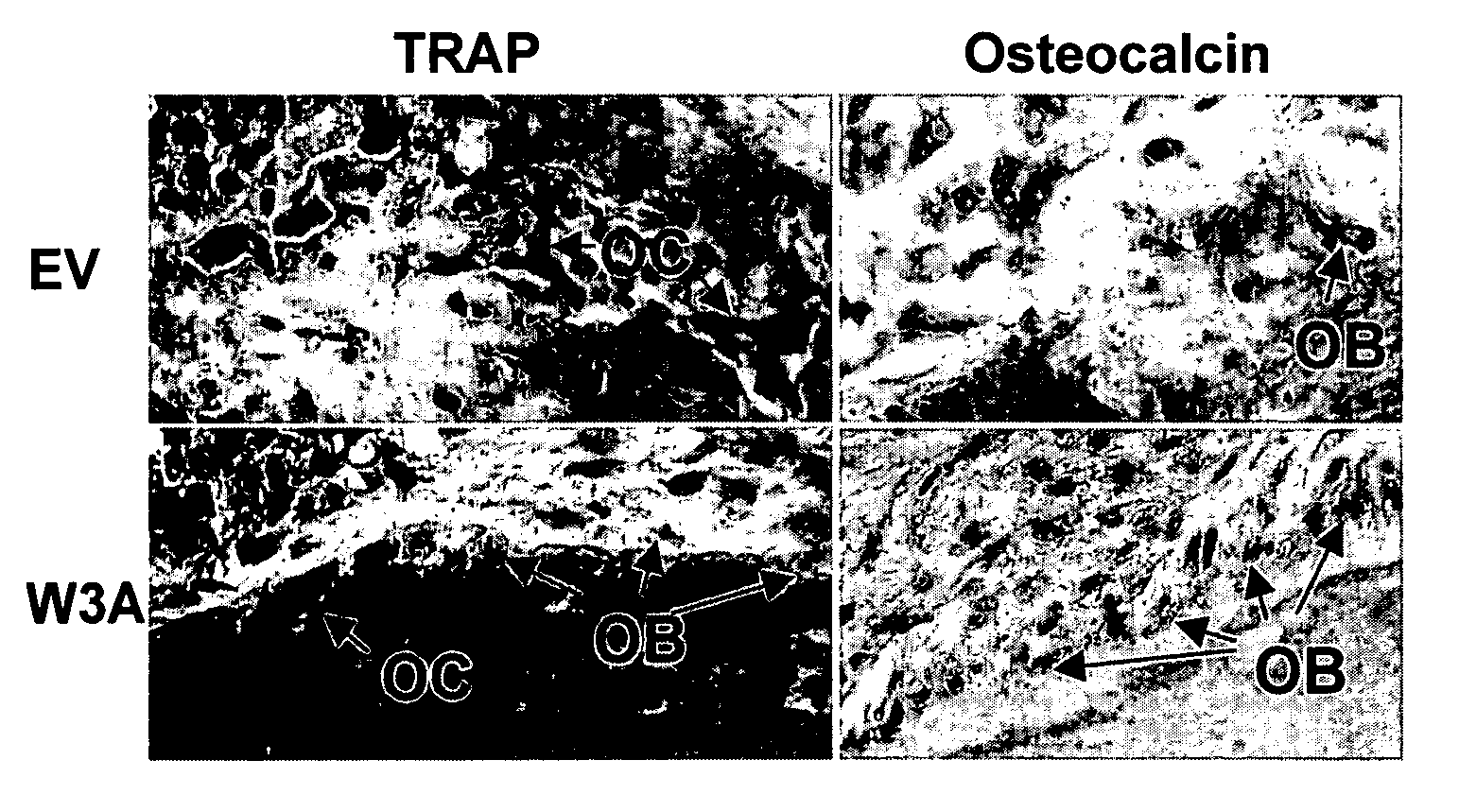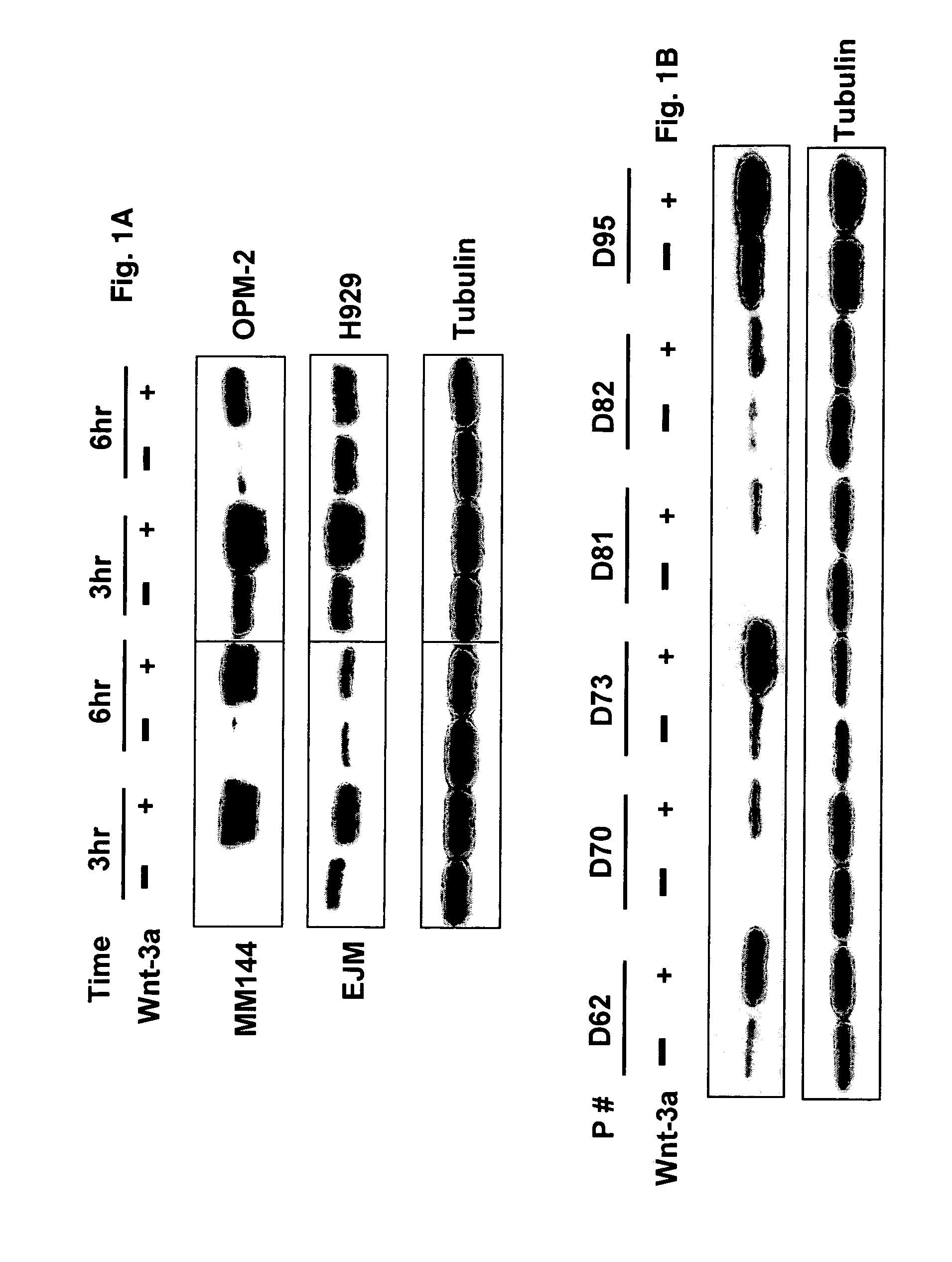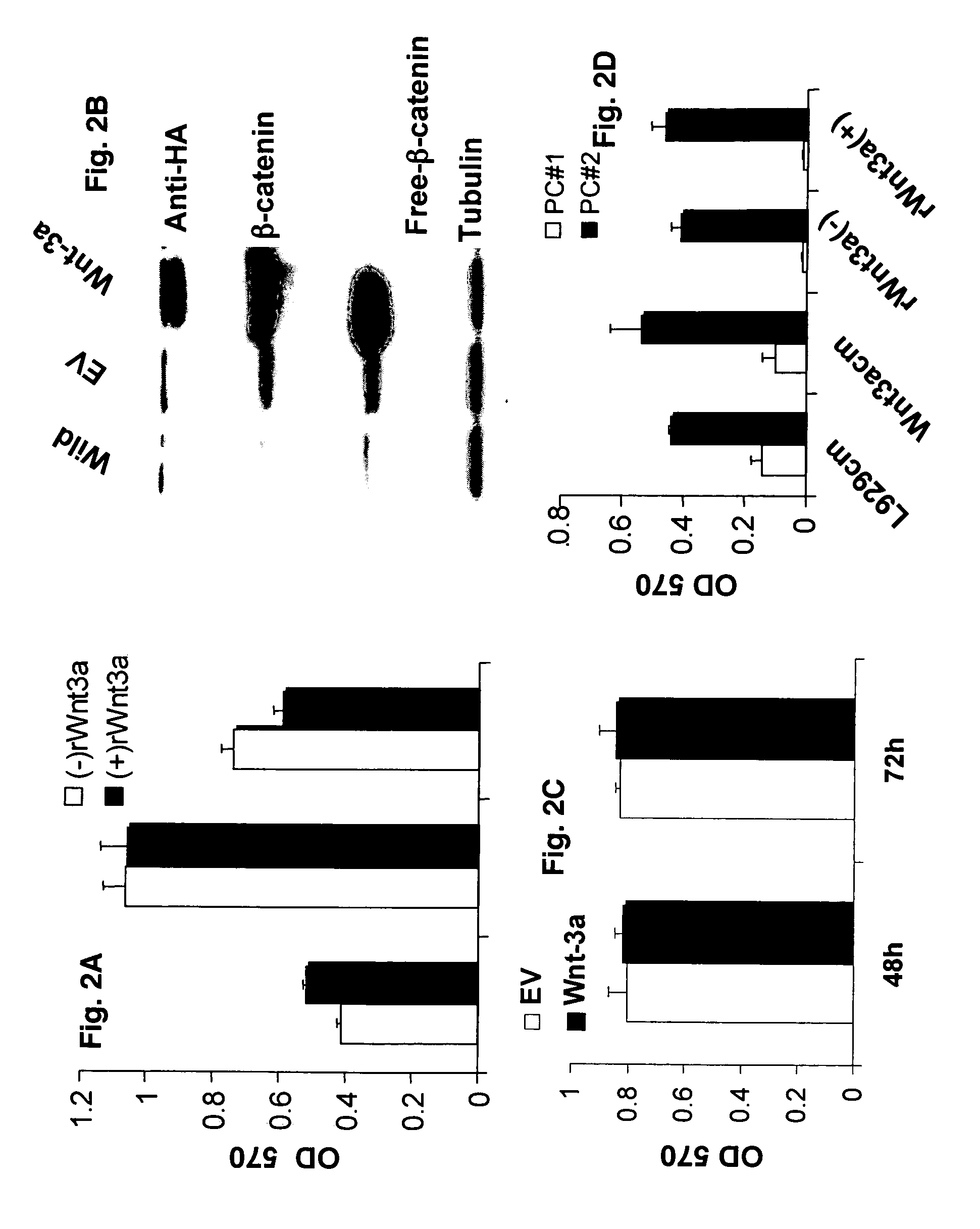Overexpression of Wnt ligands and treatment of lytic bone diseases
a lytic bone disease and wnt signaling technology, applied in the field of wnt signaling and lytic bone disease, can solve the problems of wnt signaling's proliferative effect in multiple myeloma, prior art lacks understanding of the role of wnt signaling, and insufficient means of repairing lytic lesions
- Summary
- Abstract
- Description
- Claims
- Application Information
AI Technical Summary
Benefits of technology
Problems solved by technology
Method used
Image
Examples
example 1
Myeloma Cells and Cell Lines
[0042]Multiple myeloma cells were obtained from heparinized BM aspirates from patients with active myeloma during scheduled clinic visits. Signed Institutional Review Board-approved informed consent forms are kept on record. CD138-expressing multiple myeloma cells were isolated as previously described (Zhan et al., 2002; Zhan et al., 2006).
[0043]The human MM cell lines, EJM, H929, INA6, MM144, OPM-2, SKMM-1 and U226 were cultured in RPMI1640 (Invitrogen, Carlsbad, Calif.) containing 10% heat-inactivated FBS, and 4 mM L-glutamine as described previously (Qiang et al., 2004; Qiang et al., 2002). Mouse pluripotent mesenchymal precursor cell line C2C12 was purchased from America Type Culture Collection (Manassas, Va.) and Saos-2 were cultured in Dulbecco's Modified Eagle Medium (DMEM) (Invitrogen, Carlsbad, Calif.) containing 10% heat-inactivated FBS, penicillin (100 U / ml), streptomycin (100 mg / ml) and 4 mM L-glutamine. Cells were maintained at 37° C. and hum...
example 2
Preparation of Conditioned Medium
[0044]Wnt3a conditioned medium (Wnt3a-CM) or control (Cont-CM) was prepared as previously described (Qiang et al., 2003). Briefly, Wnt3a-producing L cells (stably transfected with Wnt3a cDNA provided by Dr Shinji Takata) or control L cells were cultured to become confluent in DMEM medium supplemented with 10% FCS after which the medium was replaced with serum-free DMEM. The culture supernatant was collected after 72 hours and designated Wnt3a-CM and con-CM, respectively. The concentration of Wnt3a in CM was evaluated by the ability to stabilize β-catenin using recombinant Wnt3a (R&D Systems, Minneapolis, Minn.). The concentration in 100% CM equates to the 150 to 200 ng / ml of recombinant Wnt3a to stabilization of b-catenin.
example 3
Constructs and Transfectants
[0045]The Wnt3a-stable-expressing MM cell line was generated as previously described (Qiang et al., 2005). Briefly, H929 cells were transfected with plasmids encoding Wnt-3a cDNA or empty vector as using Lipofectamine (Invitrogen-Life Technologies, Inc.) according to manufacturer's instructions. Clonal cell lines were generated by limited dilution in growth media containing 1 mg / ml G418. Positive clones were detected by anti-HA antibody.
PUM
| Property | Measurement | Unit |
|---|---|---|
| concentration | aaaaa | aaaaa |
| bone mineral density | aaaaa | aaaaa |
| time | aaaaa | aaaaa |
Abstract
Description
Claims
Application Information
 Login to View More
Login to View More - R&D
- Intellectual Property
- Life Sciences
- Materials
- Tech Scout
- Unparalleled Data Quality
- Higher Quality Content
- 60% Fewer Hallucinations
Browse by: Latest US Patents, China's latest patents, Technical Efficacy Thesaurus, Application Domain, Technology Topic, Popular Technical Reports.
© 2025 PatSnap. All rights reserved.Legal|Privacy policy|Modern Slavery Act Transparency Statement|Sitemap|About US| Contact US: help@patsnap.com



